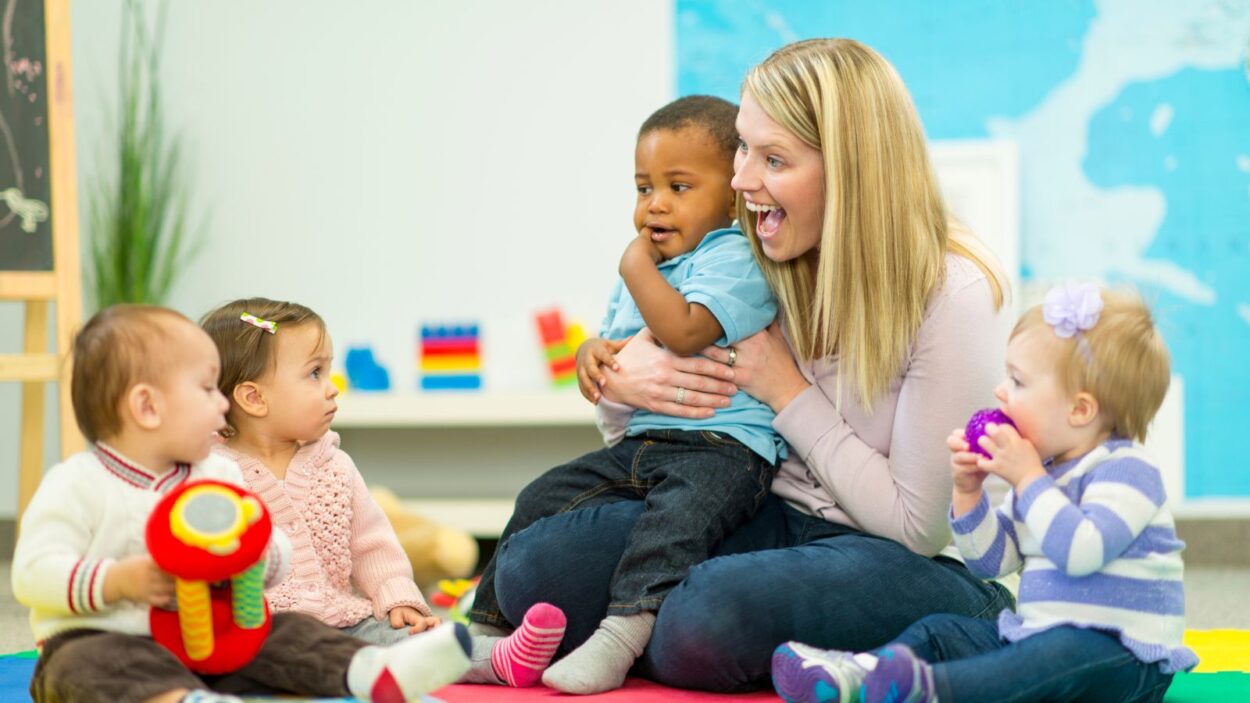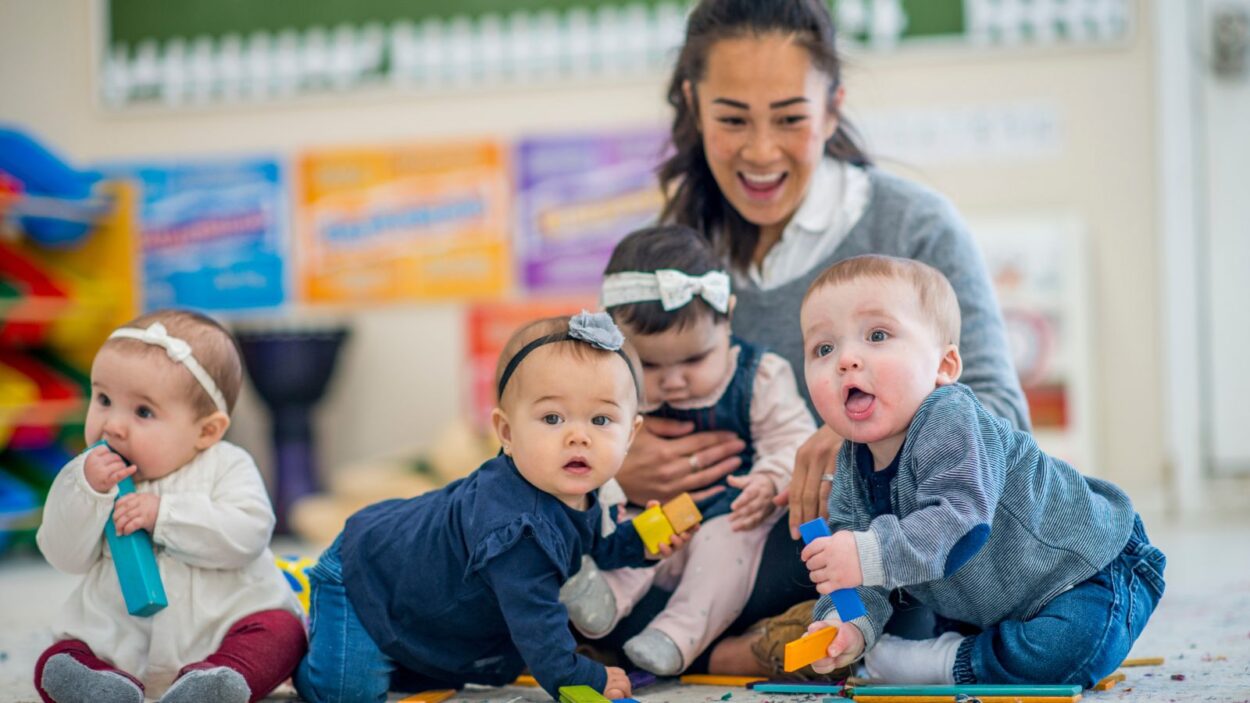Since 2020, childcare centers in Wisconsin, including Cornerstone, have been supported by federal grant funds aimed at promoting competitive salaries for our dedicated childcare educators. These funds have allowed us to retain a well-trained and enthusiastic staff and avoid significant increases in tuition for our families.
This begs the question, where is childcare headed? What are the realistic options as we see a shift in childcare and childhood education? We’ll discuss the important upcoming changes and where the potential future of early childcare is headed.
The End of Child Care Counts Program
The Child Care Counts federal grant funds are set to end in January 2024 for all childcare centers in Wisconsin. Despite our united attempts to get these funds extended, the government has decided against renewal. This situation puts many Wisconsin childcare centers in a tough spot, where they must either shut down or make significant tuition adjustments.
This issue is not limited to childcare; it’s quickly evolving into an economic problem. When dependable childcare isn’t available, parents often can’t work, leading to wider economic repercussions. It’s predicted that over 2,000 childcare centers will have to shut down, affecting 87,000 kids and resulting in job losses for 4,800 childcare workers.
“Without the continuation of child care counts, a recent WECAN survey found about 11% of all child care businesses have indicated they will immediately close and an additional 15% say closure will be imminent. Another 50% will raise rates, on average, 25%. This is between $40-$60 per WEEK per CHILD,” via the WECAN website.
For more detailed information on the broader context of this issue, we encourage you to visit https://www.wecanaction.com/. This resource will provide you with a comprehensive overview of the Child Cares Counts and its impact on childcare centers like ours.
What are the Future Trends in Childcare & Education?

Early childcare has long been recognized as a crucial element in a child’s development. As our understanding of child development and educational psychology continues to evolve, so too does the landscape of early childcare. With the current economic climate, many of us wonder where early childhood care is headed. Let’s discuss some trends:
A Holistic Approach to Early Childcare
One of the key directions early childcare is headed towards is a more holistic approach. Educators and parents are increasingly recognizing that early childhood development is not just about academics but also encompasses social, emotional, and physical well-being. This shift emphasizes the importance of nurturing the whole child, focusing on their cognitive, emotional, and physical development.
Flexible Learning Locations
The traditional model of early childcare is evolving to accommodate the changing needs of families. Flexible options, including part-time care, co-op programs, and remote learning, are becoming more common. This trend is likely to continue as families seek childcare arrangements that align with their work and lifestyle.
The use of technology in early childcare is on the rise, and it’s expected to play an even larger role in the future. Educational apps, interactive learning platforms, and virtual reality tools are being used to enhance early childhood education. These technologies can provide personalized learning experiences and engage children in ways that are both fun and educational.
More Parental Involvement

The role of parents in early childcare is evolving. The future will likely see increased collaboration between parents and childcare providers. More parents are seeking to be actively involved in their child’s early education, understanding that a child’s development is a shared responsibility.
With the changing landscape of childcare in Wisconsin, the need to collaborate among many organizations and parents will be a must to fill the gap. Unfortunately, with funding for childcare solutions ending in many states, there might be a labor shortage in female-dominated industries due to the need for mothers and fathers to adjust their work-life balance to accommodate childcare options.
Mental Health and Well-being
The importance of children’s mental health and well-being is gaining more attention in early childcare. Providing support for children’s emotional needs and teaching them coping skills is becoming an integral part of early education. This trend will continue to grow, helping children develop emotional intelligence and resilience.
Future Options for Funding/Alternative Childcare
As funding decisions are being proposed, we will have to wait and see what actual government funding (if any) will be allocated to help alleviate this childcare crisis. Many families will have to find alternative childcare options due to the potential increase in costs, which may leave many parents struggling to find a work-life balance that best suits their childcare needs. Here are some cost-effective alternatives for childcare:
- Childcare cooperatives: Childcare cooperatives can be informal, in-home care facilities administered by a cooperative of caregivers, including parents, or more official, such as a nursery school. This childcare alternative, like the foundation of a regular co-op board, is frequently far more economical because it relies on parent engagement to provide care.
- Shared babysitting or Nanny: Shared babysitting has become a popular childcare alternative for groups of families with comparable care needs as childcare expenses continue to rise. Shared babysitting, also known as nanny sharing, occurs when two (or more) families collaborate to pay one nanny to care for their children at the same time.
- Non-profit centers: Depending on where you live, activities given by non-profit organizations such as the YMCA or the Boys and Girls Club can be reasonable options for children to participate in, especially if a childcare option is unavailable. In addition, these programs may be more adaptable than standard daycare offerings.
- In-home daycare: In-home daycare is childcare run out of a daycare provider’s home rather than a daycare center. Though the requirements vary by state, this daycare option is often limited to six or so children of varying ages. Make sure to do your research on in-home daycare centers as some are not state or federally regulated.
- Family & Friend care: This can be difficult to find, but if you have a close friend or family member who has a flexible schedule and is ready to help, don’t be reluctant to accept their offer. This can be a more affordable option that also gives peace of mind.
While we know many of these options are different from traditional daycares, we know how important it is for our families to know about their options. As much as we love and appreciate all of the families that come to Cornerstone, we believe that every family should do what is best for their financial and work situations.
If you are in need of additional childcare financial assistance, please check out the ChildCare.gov website for more information. Additionally, make sure you research if you’re eligible for a childcare subsidy or other money-saving options.
At this moment, we don’t know what the future of childcare looks like and we can only hope for the best and prepare for the worst. We hope that continued advocacy and policy changes will work in our favor, not just for the sake of our staff but for the sake of childcare across the country. Thank you for your continued support!



